
Chilean Flora for Pacific Region Gardeners and Botanical Travelers
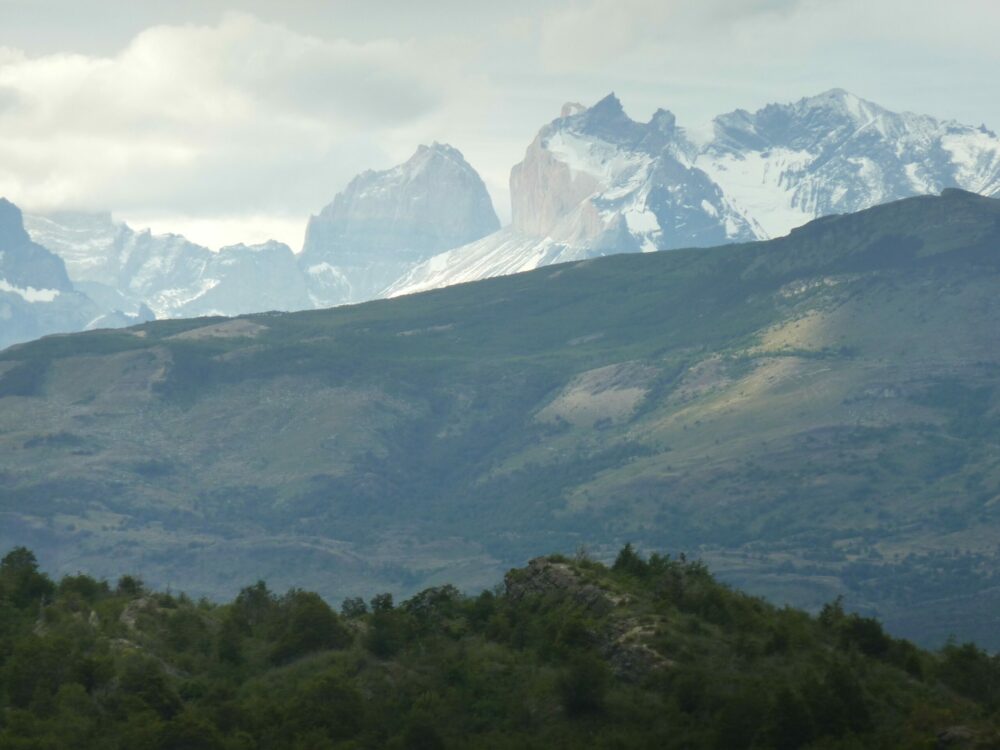
Contributor
- Topics: Nature is Good For You
Fall 2023
Chilean flora has long inspired regional gardeners, brightening West Coast gardens with distinctive shapes from fuchsias to gunneras. Daniel J. Hinkley spoke with Sarah Beck about quintessential Chilean plants for gardeners, whether found during the trip of a lifetime or when bringing a sense of exploration home.
Daniel J. Hinkley is a writer, lecturer, explorer, nurseryman, and garden maker. He designed and established both Heronswood and Windcliff in Washington state.
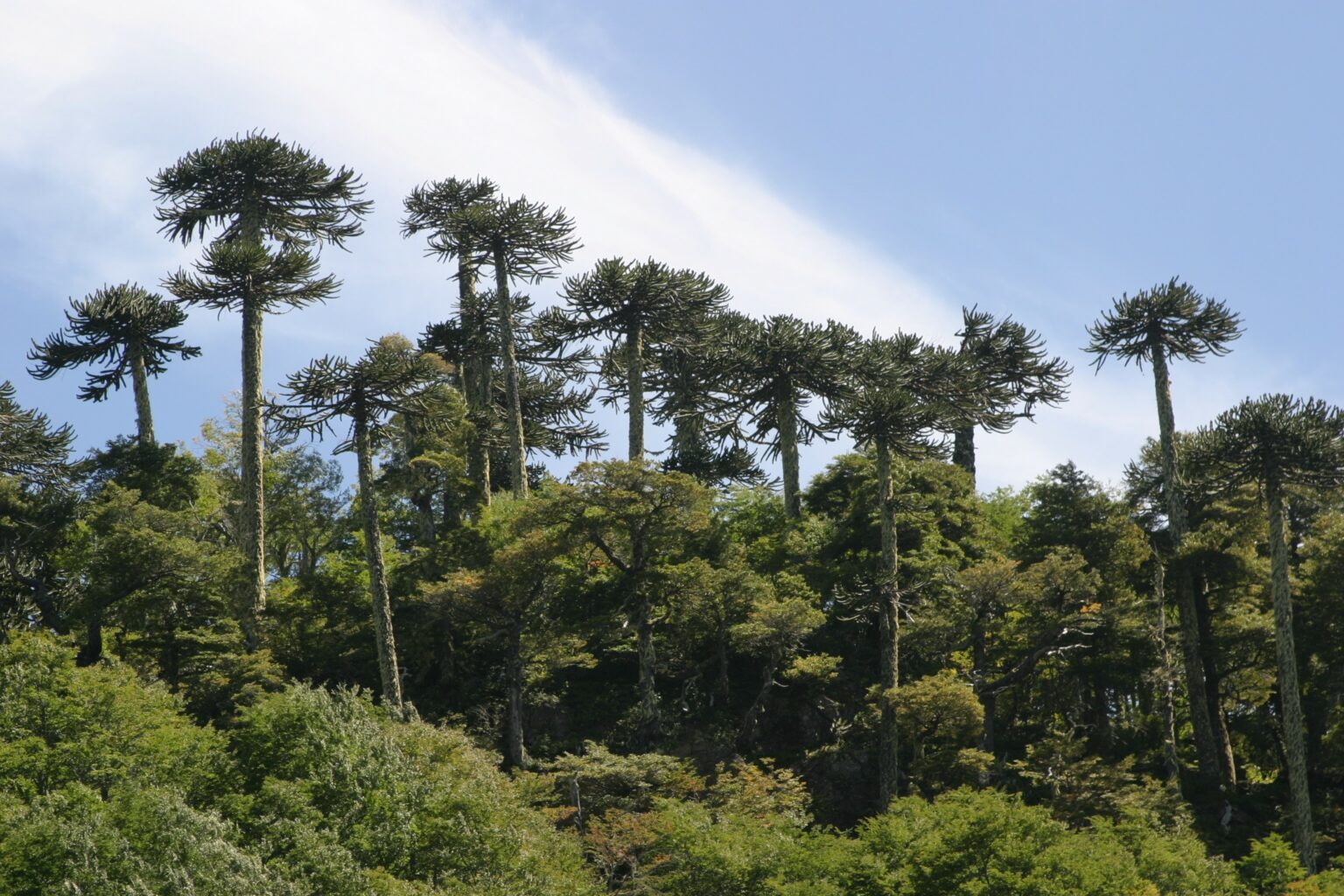
Sarah Beck: You have said that there are a number of plants many of us would find familiar, but aren’t aware their origins are Chilean, fuchsias for instance! Can you talk about a few species?
Dan Hinkley: There’s quite a few. Monkey puzzle tree (Araucaria araucana) is perhaps the most iconic tree that you would see throughout the West Coast that has its origins in Chile. It occurs in Argentina as well, but Chile is where you would see the best examples of this remarkable tree in situ.
The Antarctic beeches (Nothofagus) are also very much part and parcel to the climax forest of Chile. Those are probably not known as much to the lay gardener as they should be. Another tree which should be noted, is the spectacular Chilean firetree (Embothrium coccineum).
You’ve already mentioned fuchsias, of course. Fuchsia magellanica is virtually everywhere.
As well as Alstroemeria, which is a genus that is gaining once again in popularity. You will see roadside margins and entire forest floors filled with different species of Alstroemeria in blossom. It is so exciting to see those species in blossom in their rightful places.
One of the plants that strikes a chord with so many gardeners when they see it, whether it’s in a garden in Europe or in the Pacific Northwest, are the Gunneras. It’s the largest-leaved herbaceous plant in cultivation, with leaves up to 12 feet across. It’s exciting to see in the wild and, of course, it’s very, very much part of the cuisine of Chile. They eat the stems, called prickly rhubarb, just like they would rhubarb.
Sarah Beck: That’s fascinating. Chileans cook it like rhubarb?
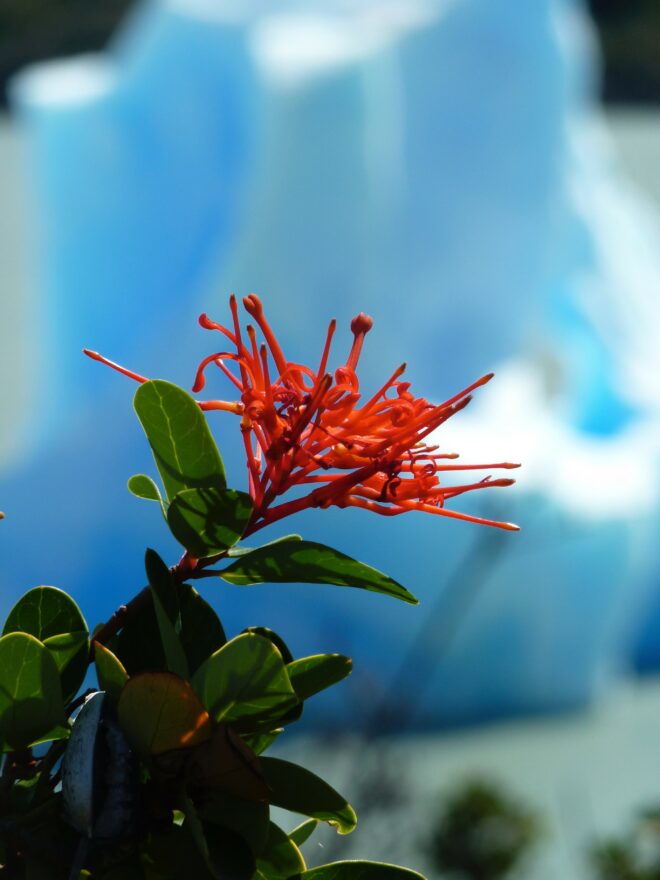
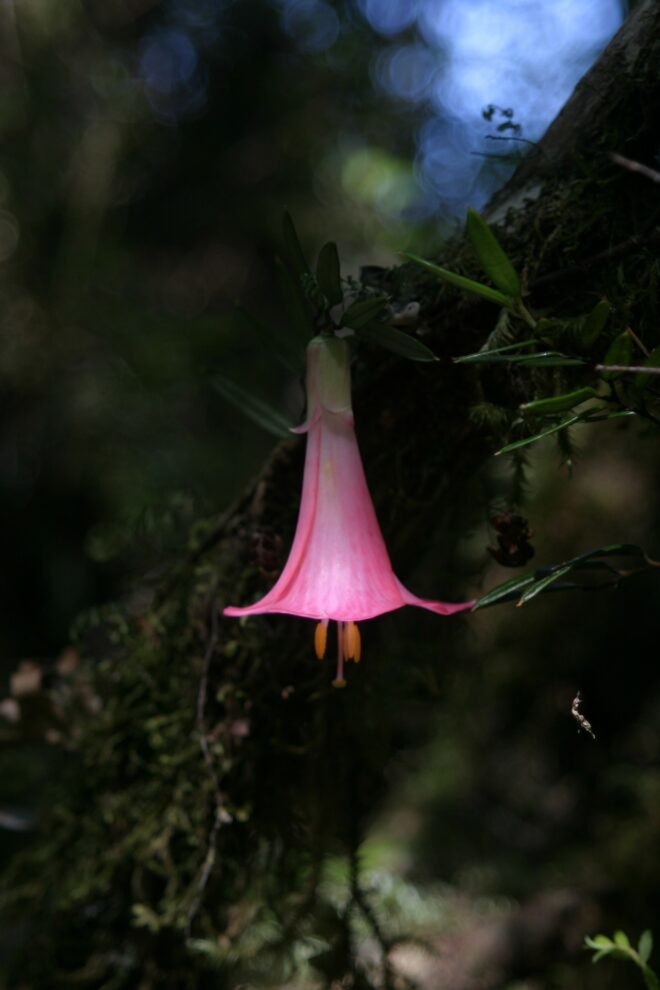
Dan Hinkley: It’s called nalca on the menu, so you would see it stewed like rhubarb. It’s really fun that you see people out harvesting it in early spring when it’s nice and tender, just like we would harvest rhubarb.
There are barberries, in particular Darwin’s barberry (Berberis darwinii). He first collected that on Chiloé Island, just south of Puerto Montt, during his voyage of the Beagle. The iconic shrub, at least in the Pacific Northwest, is frequently seen and very few people realize how much association it has with Charles Darwin.
Sarah Beck: We had an interesting conversation recently about connections between climatic conditions in the Pacific region. From Baja California to British Columbia, we have a range of variability: fascinating coastal influences, more intense dry or wet, elevation changes. Biodiversity hotspots are real! You said something about conceptually turning the West Coast upside-down and seeing Chile’s plant life. I’m curious about how you make big-picture connections between these places?
Dan Hinkley: It’s a long, long, narrow country. It’s very mirror-like, in that the central northern part of Chile has that extreme drought, perhaps more accentuated than what you would have in California—Southern California and in Baja— but not that far off the mark. It’s because of the Humboldt Current, that’s the current that operates off the west coast of Chile, accentuating the dryness to the north of the country.
The Atacama Desert is one of the driest places on Earth, north of Santiago. You’re virtually not getting any rain there at all for years at a time. So it’s a little bit more extreme than what you would think of in Southern California.
But as you go further south, you’re basically running into the same climactic zones, albeit a bit more temperate than what we have in Washington state and British Columbia, but it is still very similar with the rainforests and enormous trees. Sadly, many of Chile’s virgin forests have been decimated, with losses of plant diversity.
Sarah Beck: It is interesting because when we talk about biodiversity, those big shifts in terms of wet-dry and elevation are even more extreme in Chile. I’m assuming there’s a lot of microclimates to see.
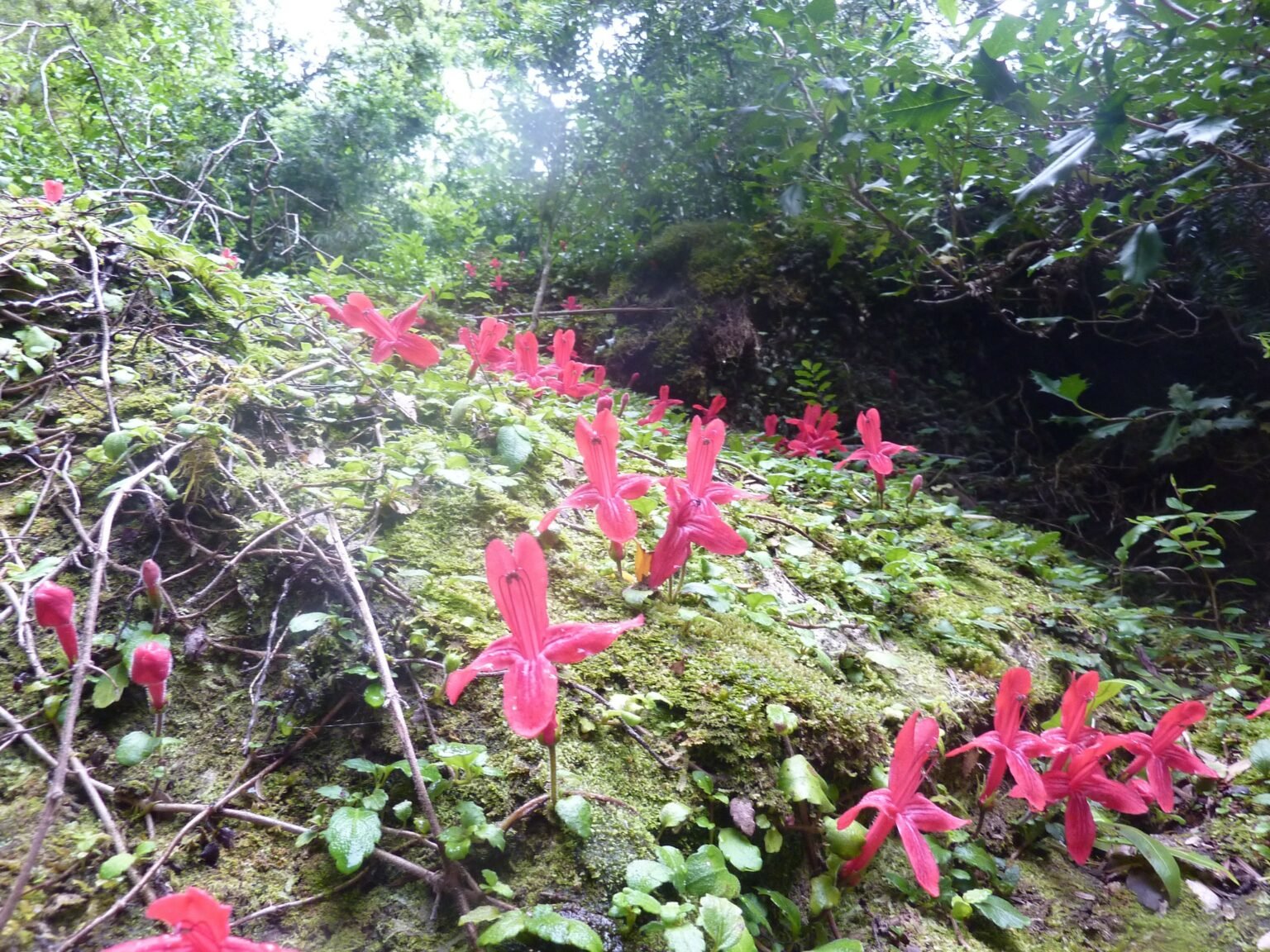
Dan Hinkley: It’s really extraordinary. You can go up one valley and it’s completely dry, and you just go one valley north or one valley south, and you’re in rich, moist habitat. So it is microclimates accentuated, basically on steroids, and it’s just a slight variation of which direction the valley runs, whether there’s active river systems or not. So it’s really amazing to see how all things mutate, mile by mile. .
Sarah Beck: You are known for your work as a plant explorer. What gets you excited about going to Chile?
Dan Hinkley: I always become excited about seeing a plant in its natural haunts. It teaches you so much about how to garden, where to place plants in the garden, the diversity within each species. You’ll see that variation within the gene pool of any species and that’s, to me, the most exciting thing about going on trips like this, seeing plants in their nativity.
It’s an opportunity to see the congregation as a whole, what is growing next to what, perhaps what birds are pollinating the plants, what butterflies, what insects, the type of soils that they’re growing in. It all puts another piece of the jigsaw puzzle together when you come home and you have that realization of how complex and complete, each system is, and it gives you just a little bit greater understanding of how it all works.
That translates to my own garden as to where I use plants more effectively to their advantage, to a degree in which they’re happier. And of course, if they’re happy, the better they look.
Sarah Beck: You know, that is such a great point that there is nothing that substitutes for having your own sensory experience somewhere, and then being able to go back to your garden and think, when I saw that plant, it was in these conditions, and it seemed really happy.
Dan Hinkley: It’s so true. I used to believe that Gunnera—speaking of that enormous, beastly plant—was a plant of shaded forests with lots of moisture, and it wasn’t until I visited Chile on my first visit in 1998 that I see where it was growing on the sides of hot, dry volcanoes or right on the beaches near the high-tide line. Of course, there was subterranean moisture there in both positions, but they were very, very content in full sun. That’s how I have since cultivated them in my own garden here in Indianola, Washington.
Sarah Beck: Are there any Chilean species of significance that might be seen on your trip with Pacific Horticulture?
Dan Hinkley: Depending on how adventurous we become, whether we have the opportunity to take hikes getting up high enough, you get to witness the cotyledonous violets (Viola cotyledon), which are pretty amazing when you see them. If you think of a Sempervivum, then you realize when you’re seeing this plant that it’s actually a Viola, a violet. It’s totally amazing. They grow only in parts of Chile and of course corresponding parts of Argentina. They’re absolutely fantastic.
Another plant that we’ll see in blossom is Eucryphia cordifolia. This is a tree that is considered to be the progenitor of the best honey in the world. The Chileans are very proud of it: miel de ulmo. It is a remarkably flavorful.. That tree will paint the mountains white in February, appearing almost as if fresh snow has just fallen. Just the quantity of this species in blossom is quite extraordinary to witness.
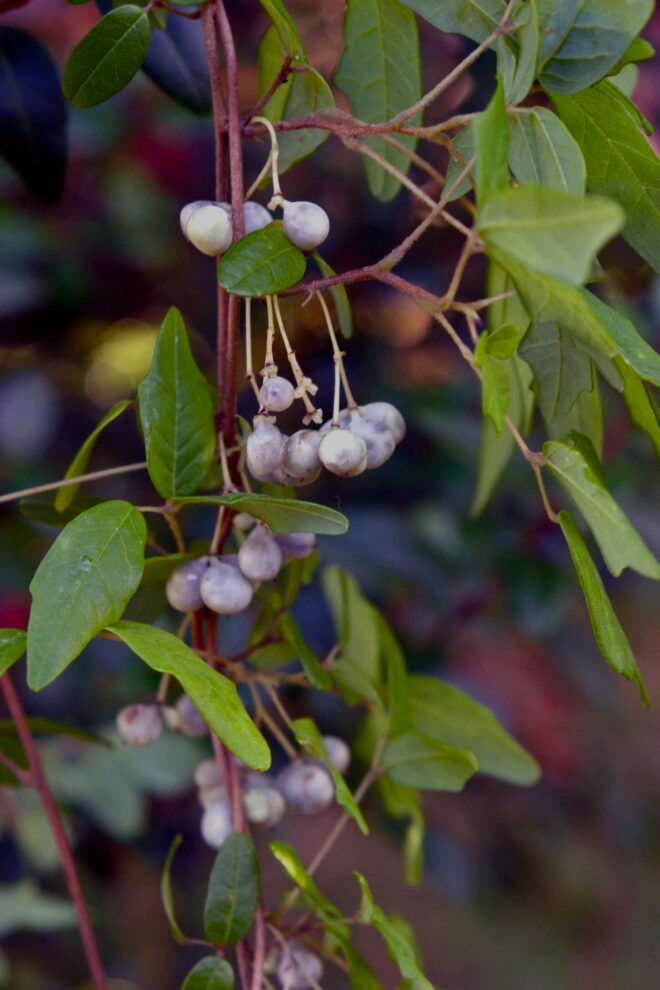
And to see flamingos, flocks of flamingos, in this barren, windy landscape with huge mountains behind you’ it seems so uncanny, so unbelievable, but indeed there they are. And along with the numerous mammals that we’ll see as well.
It’s still a very untouched piece of the planet and so worthy of going to visit it while it remains so incredibly intact.
Sarah Beck: That’s fantastic. I’m totally inspired. I’m sure others will be as well.
Dan Hinkley: Well, I’m really looking forward to the trip.
Sarah Beck: Thank you so much. I appreciate you taking the time. I wish I was going along with you!
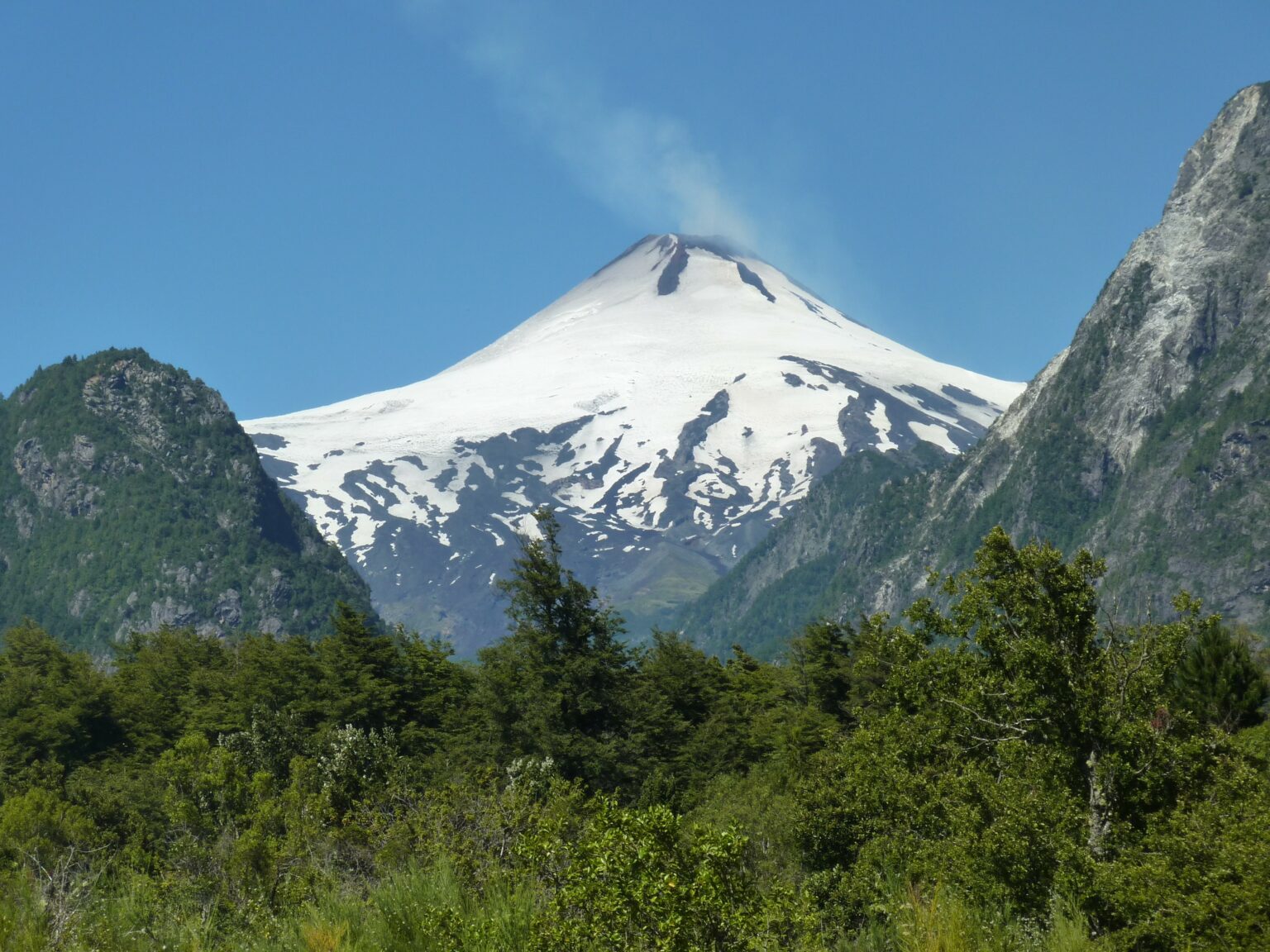
Resources
Ahead of the trip, Dan J. Hinkley recommends reading field guides as well as Charles Darwin’s The Voyage of the Beagle (1839), “because he spent so much time in the Tierra del Fuego area, right up along the same coast that we’ll be visiting.”
Hoffman, Adriana J. 1978. Flora Sylvester de Chile: Zona Central. Ediciones Fundacion Claudio Gay.
Hoffman, Adriana, Arroyo, Mary Kalin, Liberone, Flavia, Munoz, Meclica. 1998. Plantas Altoandinas En La Flora Silvestre De Chile: Zona Sur. Claudio Gay.
Riedemann, Paulina, Aldunta, Gustavo. 2001. Flora Nativa de valor Ornamental: Zona Central. Chile Zona Central.









Responses